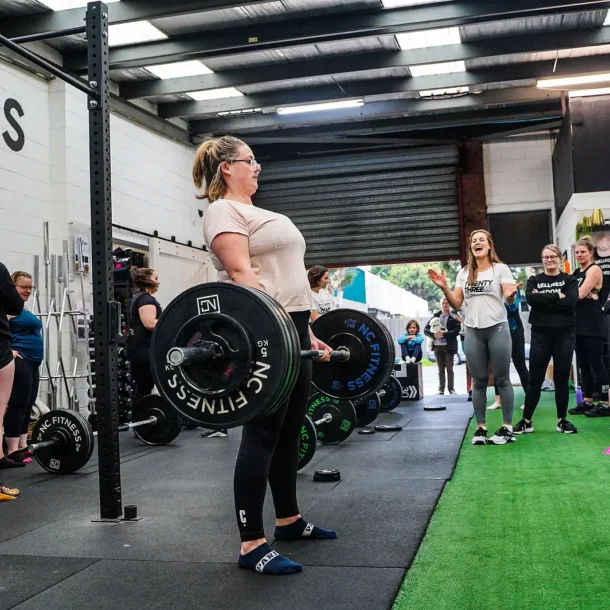

Have you heard of tempo training?
This week’s focus is on the science of weightlifting, inspired by a recent training session that incorporated ‘tempo’ work. This technique typically involves extended holds, such as a 4-6-second duration, to intensify the workout. It’s not uncommon to see tempo training integrated into group programs as a method to increase exercise challenge without necessarily increasing the weight. In this discussion, we’ll explore how tempo training can significantly boost performance, even with lighter weights.

Tempo training refers to the time your muscles are under tension (TUT) or put more simply the rate or speed of your lift. It is generally expressed as 4 numbers, i.e 2210 The first number is usually always the eccentric loading component of the lift. The second number is the time to hold the end range movement. The third number is the concentric phase of the lift and the last number indicate how long you should hold the weights at the top.
Some people believe that the more mechanical tension you apply to the working muscle, the greater the response with respect to muscle growth. And this is true when you are lifting sub maximal loads. This is because you are essentially doing more work in the slow condition when compared to moving through the set faster. This is a big advantage for tempo training when you are an athlete who has a high training load (and you need need to manage fatigue and recover), if you are injured or pregnant! My current program has a higher tempo because it would be ill advised to be training close to my max.
The trade off to tempo training is that the load needs to be lighter to compensate. This reduction in weight negatively impacts the total volume of the exercise, which seems to negate some of the potential muscle growth (hypertrophic) benefit.
So it seems that modifying tempo to increase time under tension doesn’t necessarily give you an advantage in the strength and hypertrophy realm. If your goal is to get stronger, you are better off focusing on overall load of the exercise (weights).
However, this is not to say it does not have real benefits!!!
1. Connective Tissue Integrity
Tempo training may not be the best stimulus for muscle growth, but it does have a huge impact on increasing the strength of our tendons and ligaments. Studies have shown that deliberate rep speed prescriptions are phenomenal for the rehab process of injuries such as muscle strains or tendinopathy. It has been found that heavy, slow resistance training has been shown to improve tissue healing, integrity, and pain related to muscle and connective tissue injury at a faster rate than using corticosteroid injections.
This improvement in tissue quality is one of the major benefits of including longer tempo work in your routine whether you are injured or not. Building a solid foundation within the tissues that surround your muscles and joints is always a good idea and will also help you to handle heavier weights with less risk of injury or pain later on.
2. Prepping the Nervous System
Similar to how deliberate tempo work can help build connective tissue integrity, it can also help to prime your nervous system for more explosive work. You need to learn how to decelerate and control force before you can fully produce it.
Taking the time to control the movement and “go slow” with each rep allows your nervous system to learn the pattern well. It builds strength in all areas of the strength curve and allows you to push through sticking points once you do actually load up the bar and unleash the beast. If, for example, you struggle to find adequate depth in your squat at max loading, tempo training can help reinforce correct movement patterns.
3. Movement Variety
Tempo training adds a new dimension to your training. It is nice sometimes to move away from super heavy loads and add more variety into your training. Focusing on tempo is a just another variable we can manipulate.
4. Break through lifting plateaus
23W programming typically refocuses back on tempo following our big strength cycles leading up to our lifting parties. During this work, we will be cycle back around to incorporate more volume and more time under tension. This gives your body the rest it needs from heavy work, while potentially leading to increased muscle fiber recruitment and muscle protein synthesis compared to faster reps at the same load.
If you are keen to experience 23W style of training, book in a discovery call today.






